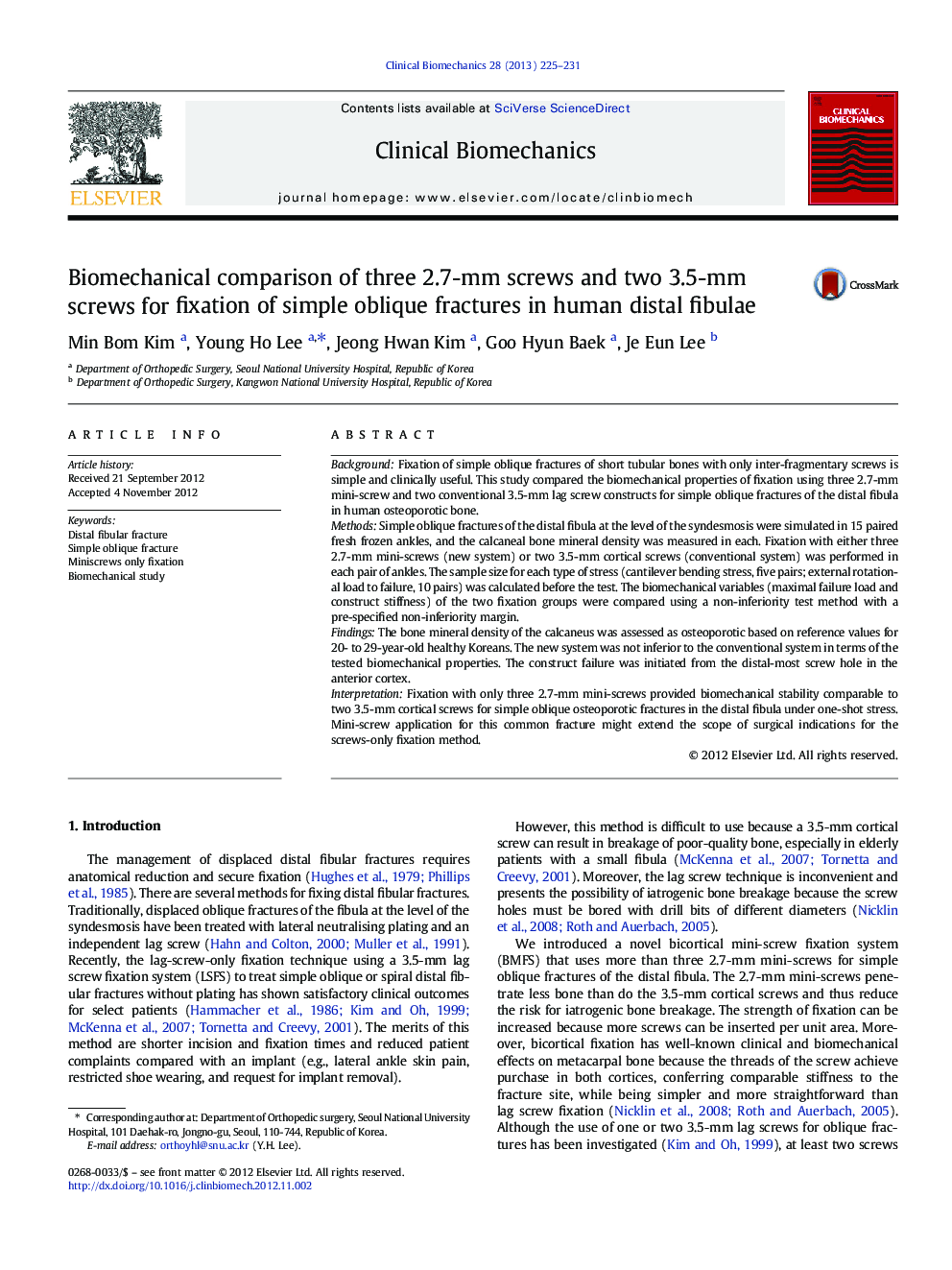| Article ID | Journal | Published Year | Pages | File Type |
|---|---|---|---|---|
| 6205071 | Clinical Biomechanics | 2013 | 7 Pages |
BackgroundFixation of simple oblique fractures of short tubular bones with only inter-fragmentary screws is simple and clinically useful. This study compared the biomechanical properties of fixation using three 2.7-mm mini-screw and two conventional 3.5-mm lag screw constructs for simple oblique fractures of the distal fibula in human osteoporotic bone.MethodsSimple oblique fractures of the distal fibula at the level of the syndesmosis were simulated in 15 paired fresh frozen ankles, and the calcaneal bone mineral density was measured in each. Fixation with either three 2.7-mm mini-screws (new system) or two 3.5-mm cortical screws (conventional system) was performed in each pair of ankles. The sample size for each type of stress (cantilever bending stress, five pairs; external rotational load to failure, 10 pairs) was calculated before the test. The biomechanical variables (maximal failure load and construct stiffness) of the two fixation groups were compared using a non-inferiority test method with a pre-specified non-inferiority margin.FindingsThe bone mineral density of the calcaneus was assessed as osteoporotic based on reference values for 20- to 29-year-old healthy Koreans. The new system was not inferior to the conventional system in terms of the tested biomechanical properties. The construct failure was initiated from the distal-most screw hole in the anterior cortex.InterpretationFixation with only three 2.7-mm mini-screws provided biomechanical stability comparable to two 3.5-mm cortical screws for simple oblique osteoporotic fractures in the distal fibula under one-shot stress. Mini-screw application for this common fracture might extend the scope of surgical indications for the screws-only fixation method.
